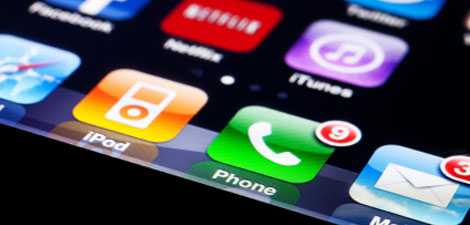It wasn’t a big beat and iPhone sales weren’t wildly above consensus, but such was the fear and skepticism surrounding Apple (AAPL) that shares rose 3.61% in trading after the earnings announcement.
The company reported earnings of $2.73 a share, five cents a share above the Wall Street consensus of $2.68. Revenue for the quarter (the second quarter of Apple’s fiscal year) was up 15.6% year over year to $61.14 billion against the Wall Street consensus of $60.94 billion.
The company also raised guidance for the next quarter to revenue of $51.5 billion to $53.5 billion vs the Wall Street consensus of $51.51 billion. Apple told Wall Street to expect gross margins of 38.3% versus the earlier company estimate of 38.0% to 38.5%. (The consensus estimate for gross margin for the next quarter was 38.5%.) Apple announced that it would add $100 billion to its share repurchase plan and raise the quarterly dividend by 16% to 73 cents a share.
In the quarter Apple sold 52.2 million iPhones, just a whisker below the consensus estimate for iPhone sales of 52.3 million units. Average selling prices was one negative in the report. The average selling price for an iPhone in the quarter was $728, versus Wall Street forecasts of $740. The average selling price in the December holiday quarter was $796. But thanks to the iPhone X’s $999 starting price, the average selling price in the quarter was above the $655 of the second quarter of 2017.
iPad sales continued to erode, although not as badly as Wall Street expected going into the earnings report. Apple shipped 9.1 million iPads in the quarter vs the Wall Street consensus estimate for 8.8 million units. But the figure was below the 10.2 million iPads shipped in the second quarter of 2017.
The closely watched services segment showed very solid revenue growth of 31% year over year and total revenue of $9.2 billion. (If you think about it for a minute, you’ll see part of Apple’s dilemma. Services are the fastest growing part of the business but at $9.2 billion in revenue, services is a relatively small part of the total $61 billion revenue pie.) The Wall Street consensus for revenue in the segment had been $8.4 billion.
Another problem that showed up in the quarter was the expected erosion of growth in Apple’s sales in China. Revenue from China climbed 21% year over year, but it was down 27% from the first quarter of 2018. The fear on Wall Street, and it seems justified by these numbers, is that Apple will lose market share in China to less expensive, but fully-featured Chinese-made phones.
Technology stocks in general–and shares of Apple suppliers in particular–climbed as Apple’s report erased fears of a slump in smartphone sales. The Technology Select Sector SPDR ETF (XLK) was up 1.25% during regular trading and added 0.38% in after-hours action. Major Apple suppliers Cirrus Logic (CRUS) and Skyworks Solutions (SWKS) were up 3.89% and 4.77%, respectively, during the day, and tacked on 2.95% and 2.31%, respectively in after-hours trading.
Apple is a member of my long-term 50 Stocks Portfolio. The shares are up 52.26% since I added them to this portfolio on November 8, 2016.


